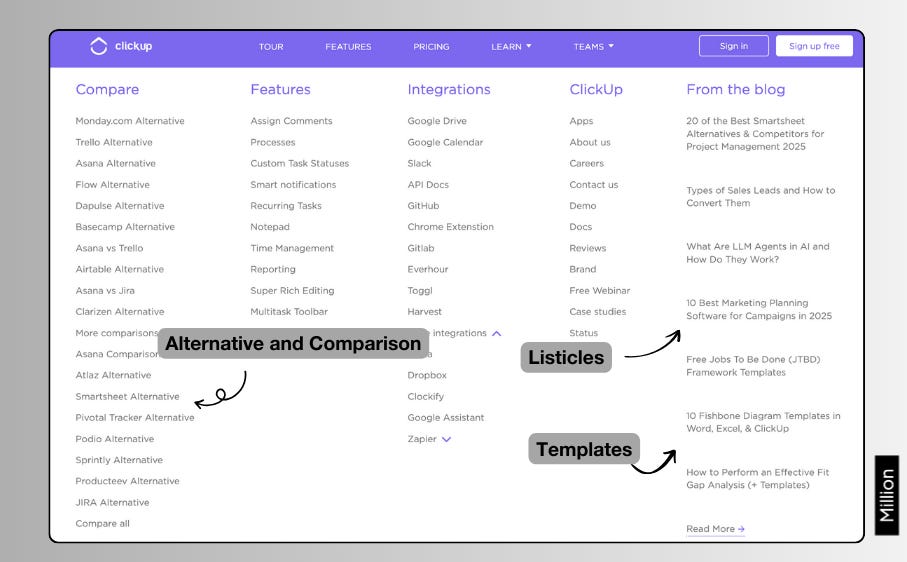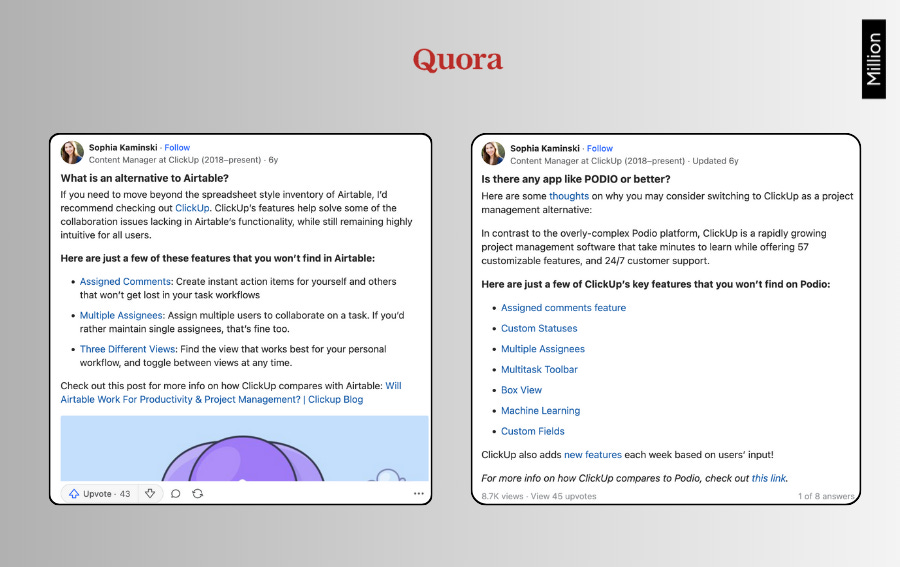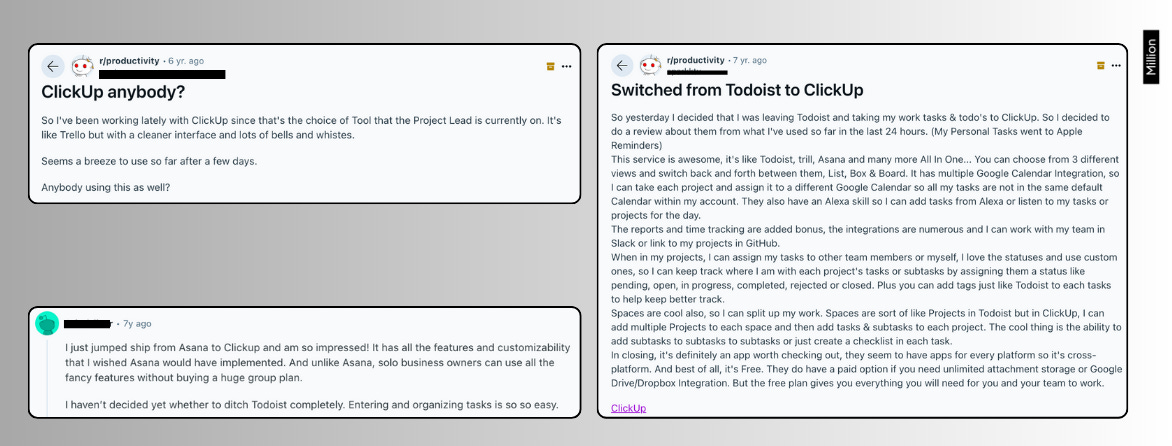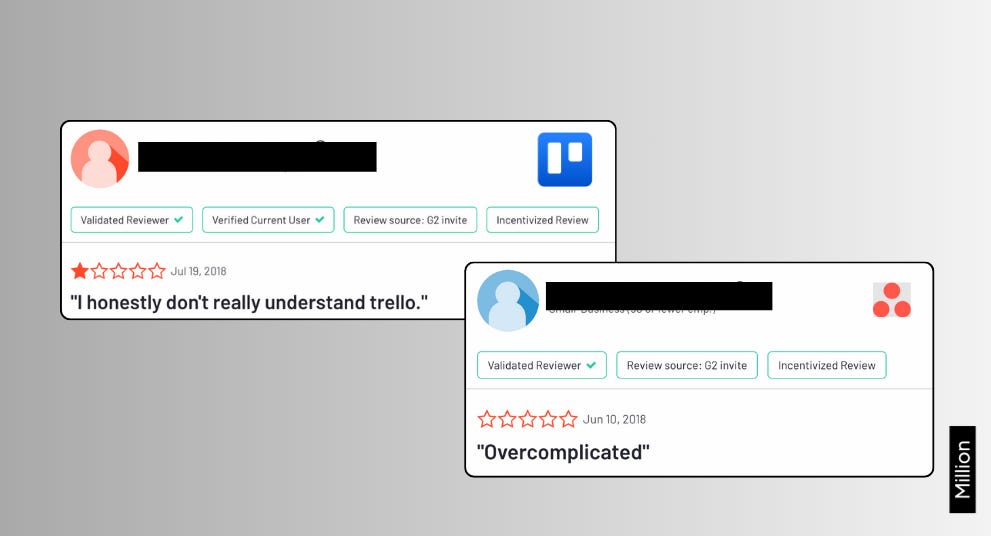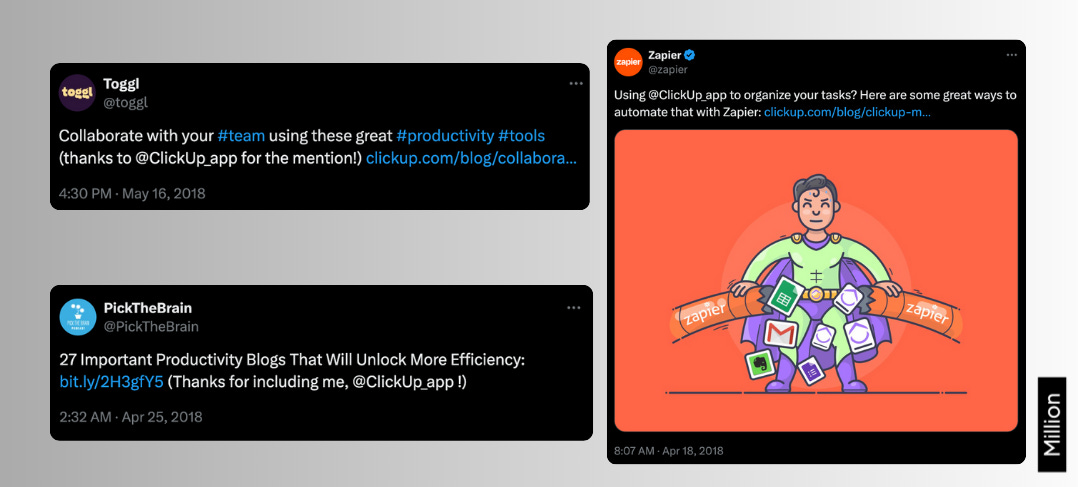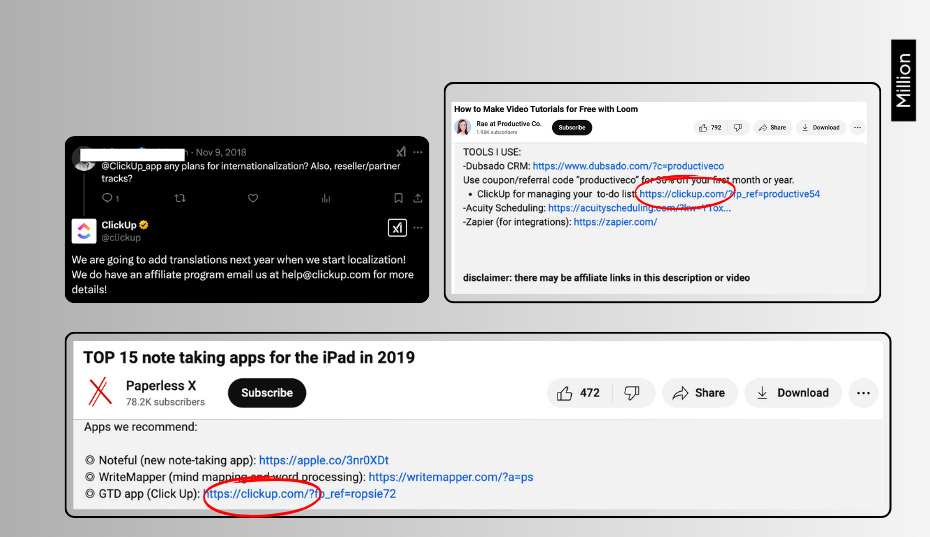ClickUp's $0 to $1 million Marketing Journey
A deep-dive into ClickUp's marketing tactics that helped them grow to $1M revenue in 12 months.
I’m starting a series on how SaaS startups went from $0 to $1 million in revenue. Specifically, I’ll break down how they approached marketing—where they started, what worked, and what didn’t.
This week, I’ve covered ClickUp.
Why ClickUp? Because they grew from $0 to $1M in revenue in their first year. That translates to 20K users at $5 per user - a remarkable achievement, especially in the crowded project management space.
So, I analyzed their marketing strategy as an outsider - listening to hours of interviews and combing through hundreds of Google Search Results, X and Reddit threads - to decode what they did and how it worked.
Here is what worked for ClickUp,
Focused on SEO early
No surprises here - when your ARPU (average revenue per user) is just $5, you need a strong inbound marketing engine to scale fast.
Within their first year, ClickUp’s organic traffic grew from 0 to 67K monthly visitors.
And they weren’t ranking for some random generic keywords. Early on, they heavily invested in content targeting high-intent, commercial keywords, specifically:
Productivity tools listicles
"Alternative" and "comparison" articles
Templates
Since these types of pages convert well, ClickUp was driving an estimated 500–1,000 clicks per month per page.
I'll say when we were zero to 10 million ARR, there really wasn't much SEO competition in our category. People were not focused on that. And we were able to create blogs and comparison page of our competitor that ranked really high for free.
- Zeb Evans, CEO, ClickUP (The SaaS Revolution Show)
Social Selling
Another key strategy was social media commenting at scale.
ClickUp’s team aggressively pitched their product wherever people asked for project management tool recommendations - especially as alternatives to Trello, Asana, or Monday.
They tirelessly commented on these threads, and interestingly, I didn’t see other competitors doing this at the time.
We did like social hacky things. We would go on Twitter and just comment on other people's posts that said, Hey, I'm not happy with Jira. I'm not happy with Asana. We would literally go on there and say, Hey, we have this new tool. We'd love to get you onboarded.
- Zeb Evans, CEO, ClickUp
Quora Marketing
They’ve leveraged every organic channels that are little explored by their competitors at that point, and one of them was Quora. It is a place often flocked by people looking for expert answers, insights, or experiences on specific topics. So answering relevant questions used to drive high intent traffic that are more likely to convert.
ClickUp’s team had a content manager profile and answered close to 170+ questions related to productivity, startups, project management, and more in their category. At an average each of the answers had 50+ Upvotes and 10K+ views. Overall the profile have amazed 532K Content views which is no small feat.
Word of mouth marketing
ClickUp’s superior and intuitive user interface made early adopters be vocal about the experience and become evangelists on socials.
Users shared first-hand experiences and actively recommended ClickUp whenever people sought project management software suggestions.
I tried digging deeper and these posts seemed organic - coming from independent project managers and scrum masters. But if they were orchestrated, ClickUp did an exceptional job fostering this type of advocacy.
Outreach to unhappy competitor customers
One of the most interesting tactics I uncovered came directly from ClickUp’s CEO—manually reaching out to people who left bad reviews for competitors and nudging them to try ClickUp.
We would go to Capterra and other review platforms and would look at people that rated other competitors poorly, and then we would reach out to them on LinkedIn and say, Hey, we've got a new product. We'd love for you to try it.
- Zeb Evans, CEO, ClickUP
Like social media commenting, this isn’t scalable, but it’s a low-hanging fruit for early-stage startups. Unhappy customers are the easiest to convert.
Leveraged partner marketing
ClickUp tapped into other brands' audiences and authority through:
1️⃣ Listicles featuring automation & productivity apps
2️⃣ Integrations with Zapier, Slack, Calendly, and more
This strategy led to brands like Zapier and Toggl resharing ClickUp’s content—boosting their SEO (via backlinks) and brand reach.
Affiliate program
ClickUp also gained traction through affiliates, attracting productivity gurus who saw the product’s momentum and wanted to review and promote it.
Summary
ClickUp wasn’t passive - they actively looked for ways/leverages to out-wit their competitors even in the mainstream channels like SEO.
ClickUp’s $0 to $1M journey wasn’t driven by a single channel but by these 7 growth tactics.
High-intent focused SEO
Real-time Social Selling
Community-led word-of-mouth
Competitor customer outreach
Partner marketing
Affiliate marketing
This combination helped them to break through a crowded market and scale rapidly.




